Can Succulents Survive Winter? Best Care Tips You Need
As a participant in the Amazon Services LLC Associates Program and other affiliate programs, Easy Homemade Life may collect a share of sales or other compensation from the links on this page. This comes at no additional cost to you, and all the prices and availability are accurate at the time of publishing.
The winter season can be harsh, even for hardy plants like succulents. That’s why you may wonder, “Can succulents survive winter?” It turns out they can, especially if you know how to care for them properly.
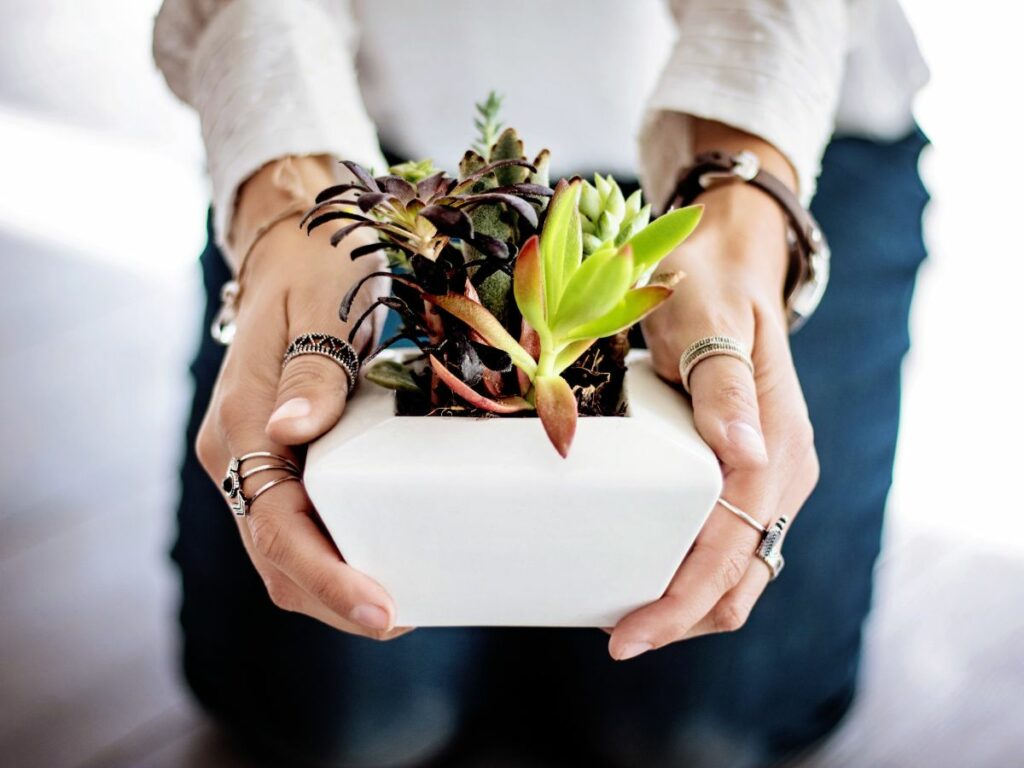
In this article, I will share practical tips for keeping succulents alive and thriving even in colder months. This guide will help keep your plants vibrant and lush this season whether or not you have a green thumb.
Understanding The Winter Challenge for Succulents
It’s easy for our attention to go straight to gift-giving and hosting holiday parties while forgetting about essential chores like closing a pool for winter and preparing plants. Before colder temperatures come, tend to your plants first.
Succulents are a unique type of plant and happen to be my personal favorite. They typically grow in deserts and semi-deserts in warmer climates – think Mexico and South Africa. Succulents are low-maintenance plants, great for centerpieces, and tend to do well indoors.
During the winter season, succulent plants have to face several challenges:
- Overwatering risk: Because they enter a semi-dormant state during winter their metabolism slows and growth reduces, they require only a little water. Too much water in winter can hurt dormant plants by causing root rot due to prolonged soil moisture.
- Diminished sunlight: Shorter days result in fewer hours of sunlight, leading to potential etiolation, where succulents grow elongated and pale as they reach for light.
- Temperature fluctuations: Succulents can be sensitive to the freezing temperatures and drafts associated with winter. These conditions can induce stress or damage the plants.
How to Keep Succulents Alive in Winter Outdoors
There is good news if you have hardy outdoor succulents like sedum, sempervivum, or agave. You do not need to bring them inside your house. However, that doesn’t mean it’s sufficient to leave them outside like normal. You still need to care for them, even if they have a good chance of withstanding winter.
Here’s how you can keep them alive in winter outside your home:
- Raise your succulents off the ground to protect their leaves and roots from ground frost. Start a vertical garden or use traditional, raised garden beds.
- Prune dead leaves to prevent spreading rot.
- Wrap the plants in fleece in late fall or early winter to protect them from wet and cold weather.
- Add a layer of gravel around their roots to keep rot and frost at bay.
- If the plant is potted, check the drainage, so the bottom layer won’t freeze.
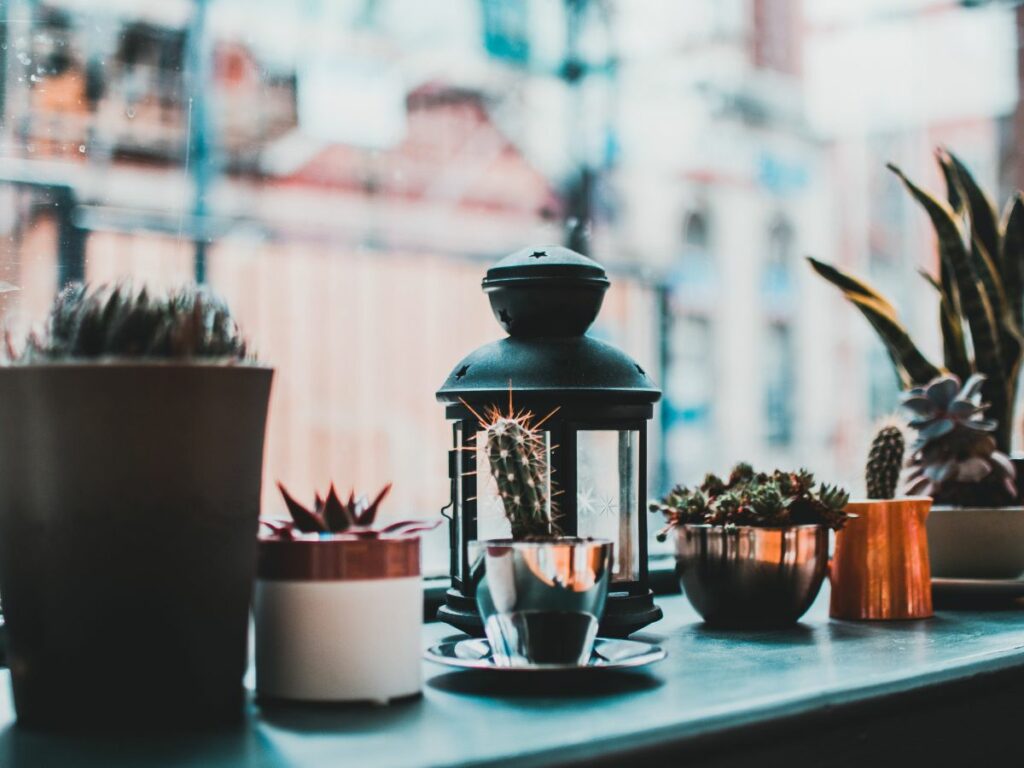
How to Keep Succulents Alive in Winter Indoors
Even a light frost can damage the tender leaves of tender succulents. That said, if you have soft succulents, it’s best to keep them as indoor plants during winter.
Here’s how to keep indoor succulents alive through winter:
- Allow succulents to soak up water for two to three days before bringing them inside.
- Transfer them to a pot with a drainage hole and well-draining soil.
- Watch for bugs that could damage the leaves. Also, check the succulent beforehand and make sure there aren’t already bugs on them.
- Place the plant near the brightest window in your home. Succulents will like a window with bright indirect sunlight.
Choosing the Right Succulents
There are different varieties of succulents. Picking one suited for your local climate is important if you want the best chance of success.
As I mentioned earlier, varieties like sedum, sempervivum, and agave are perfect for winter because they can handle the cold season. Choosing cold hardy succulents from the beginning can save you a lot of time and effort once the winter months come around.
However, if you already have plants in your space, assess your existing succulents to see if they are well-suited for winter. Look for signs of adaptability, such as their ability to endure low temperatures and reduced light.
Knowing the species of your succulent is helpful because they have different needs. Some can survive outdoors, while others cannot.
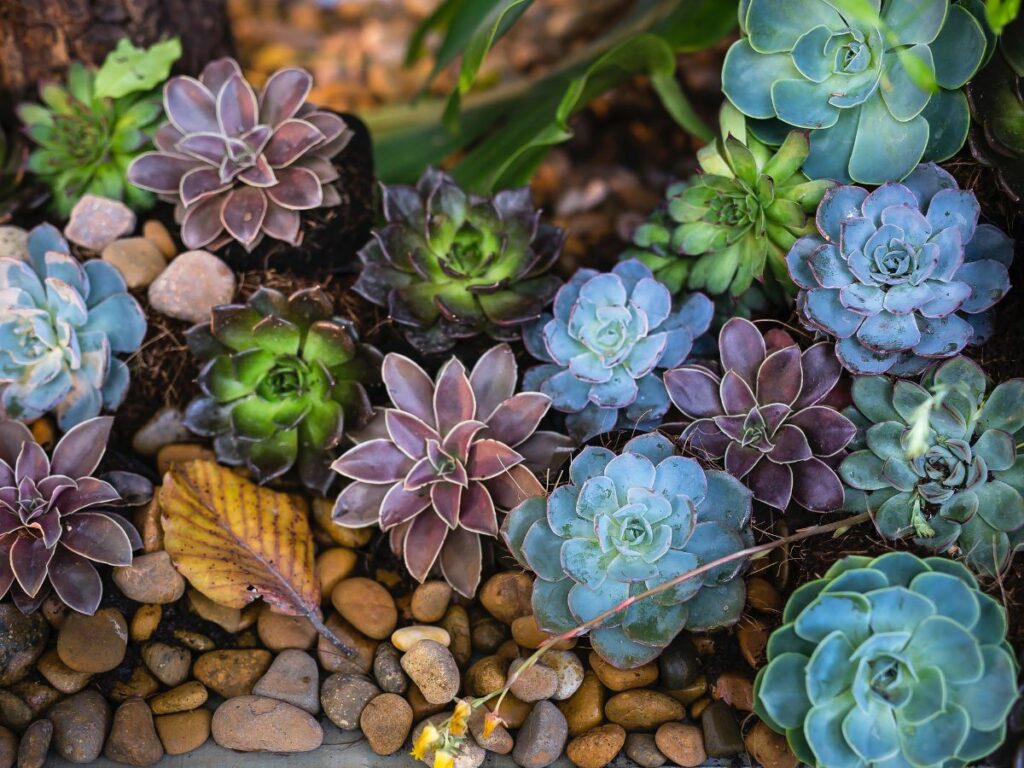
Prepare by Pruning and Repotting
Prepare the plants ahead of time by pruning them back and repotting early in the season when needed. Looking for leggy stems or overgrown containers, which can negatively affect their health and beauty long-term.
It’s a good idea to divide and replant a succulent once it’s outgrown the current pot. A bigger space will give extra room to grow and thrive in winter. You can also repot sections to give as Christmas gifts later in the year.
How to Repot Your Succulent
Here’s a simple step-by-step on how to repot a succulent so it has a good chance of surviving winter:
- Find a bigger pot with good drainage.
- Add soil to the new pot.
- Remove the succulent from its original pot, and trim any dead leaves or roots, before placing it in the new pot.
- Place somewhere with enough light.
- Water sparingly.
Proper Watering in Winter
Winter is the perfect time to show some extra love to your succulents. However, it’s important to remember that overwatering during this season can cause root rot. So, as a general rule, make sure to adjust your watering routine to match their needs.
Moisture Needs During Colder Months
Assessing succulents’ moisture needs during colder months involves letting the soil dry out between waterings. Stick to the “soak and dry” method, watering deeply but infrequently. This allows the roots to access moisture without sitting in damp soil.
Tips for Watering Your Succulents
Caring for your succulents in winter may not be as easy as caring for them in warmer months, but it’s still easy. Use well-draining soil and pots with drainage holes to avoid overwatering and root rot.
If your plant is small, watering with a spray bottle might be sufficient. Remember to be patient between waterings and empty excess water from the saucer whenever you see it.
Adjusting Light and Temperature
Light and temperature can significantly impact the health and growth of your succulents. The lack of enough sunlight in colder climates can cause your little plant friends to struggle. But don’t worry; with a little TLC, you can ensure that your succulents thrive all year round.
Placing plants in areas with indirect light and maintaining a temperature between 50F to 60F (10C to 15C) is usually enough to keep your succulents healthy. Consider using a grow light if natural light is lacking.
Grow lights offer a valuable solution by providing the necessary light spectrum for optimal growth. Additionally, temperature-regulating methods, such as heating mats or small space heaters in draft-prone areas, can help maintain the ideal environment for your succulents.
Protecting Succulents from Cold Temperatures
Succulents are vulnerable to frost during winter, which can harm their cells and overall health. So, make sure to protect them even if it seems tricky at first.
Here are the ways you can give frost protection to a succulent:
- Cover them with blankets or frost cloth. Do this before nightfall and always use breathable materials to prevent moisture buildup. Remember to uncover them during the day for sunlight and air circulation.
- Relocate them to a sheltered area like a garage or covered porch.
- Bring them indoors and place them in front of a window.
Preventing and Treating Pests and Diseases in Winter
Sometimes winter comes with unwanted guests in the garden. Pests like mealybugs and fungal infections can be a real pain. Unfortunately, they love the cool, damp weather that winter brings.
It’s essential to take care of your lovely succulents by preventing and treating any issues they might face. If you see mealybugs, isolate affected plants, wipe them with rubbing alcohol, and apply neem oil. For fungal infections, ensure air circulation, well-draining soil, and low humidity.
Inspecting your succulents regularly is one of the best ways to keep them healthy. Look for signs of pests or diseases, such as yellowing leaves or fluffy, cotton-like clusters. You can help your little green friends stay happy and vibrant by catching these issues early.
Final Thoughts
In conclusion, ensuring the winter survival of your beautiful succulents boils down to providing the best succulent care. Offering them plenty of sunlight, just enough water, and the right attention will keep these low-maintenance plants thriving even on the coldest winter days. A little extra care during the winter months can go a long way in preserving the health and vibrancy of all different types of succulents.


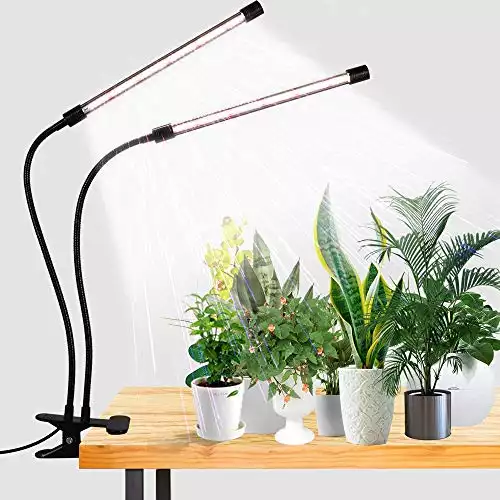
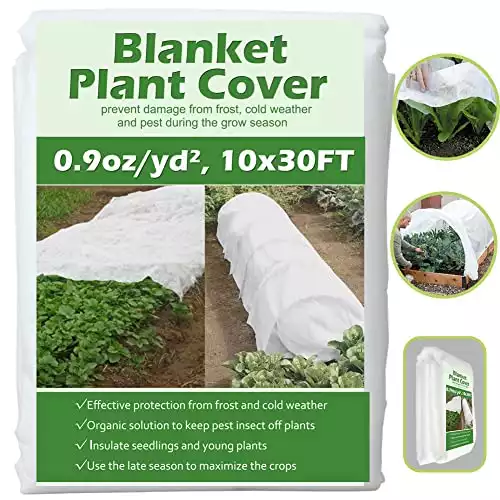

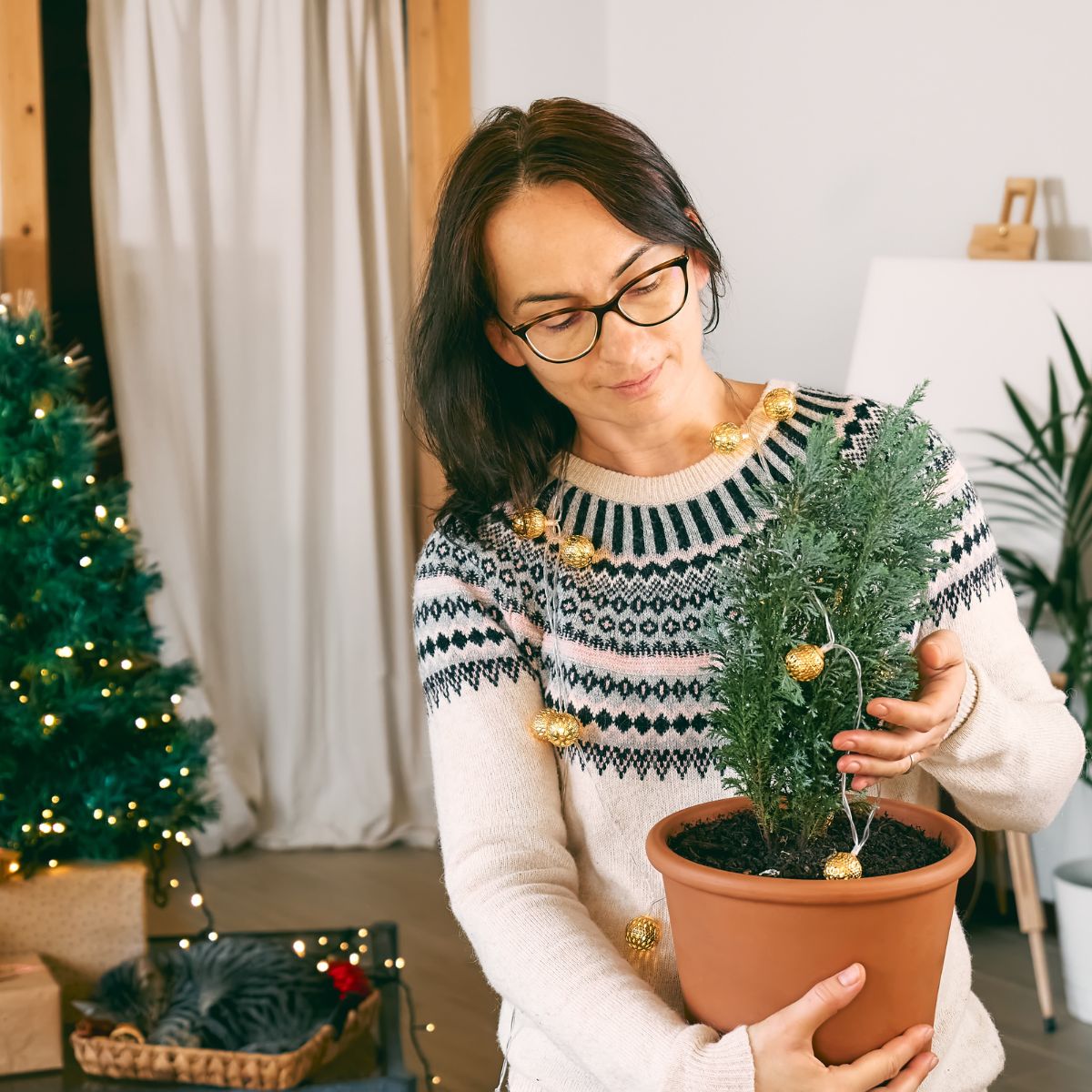





I just sent this to my husband who has killed so many of our succulents from overwatering. Fingers crossed we don’t have to buy new ones again this year!
Lol, yes, let’s hope he finds the tips useful. Thanks, Callie.